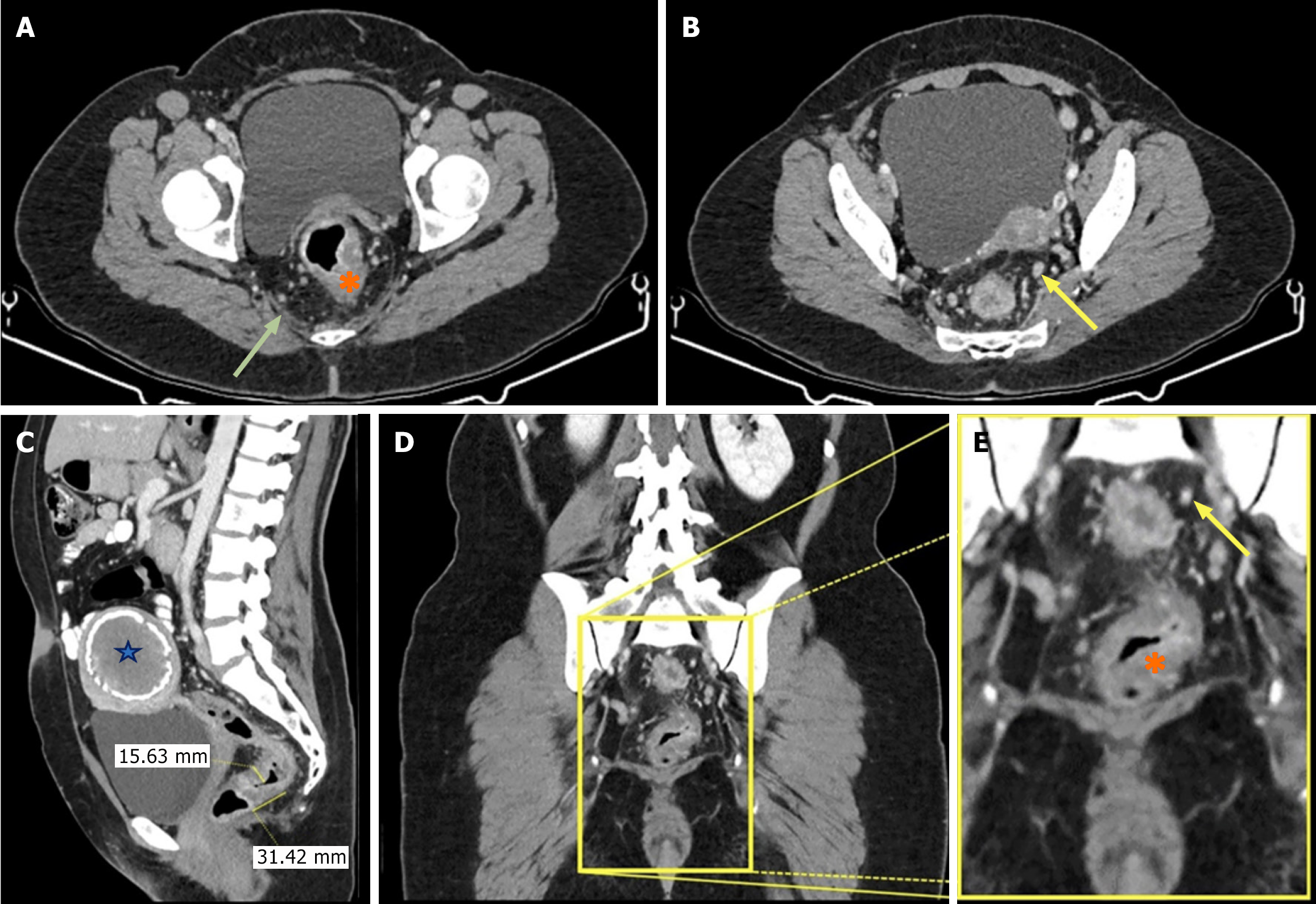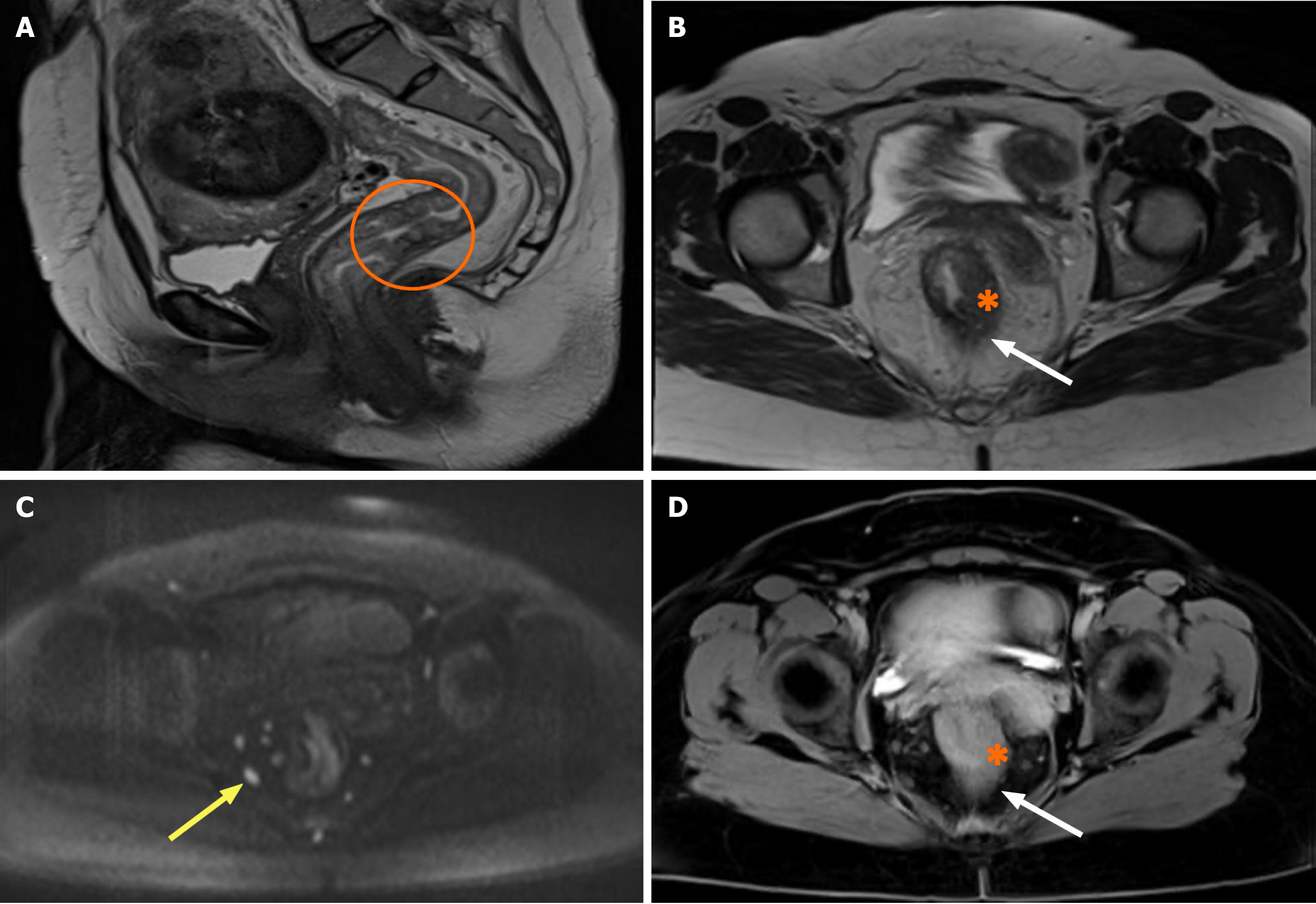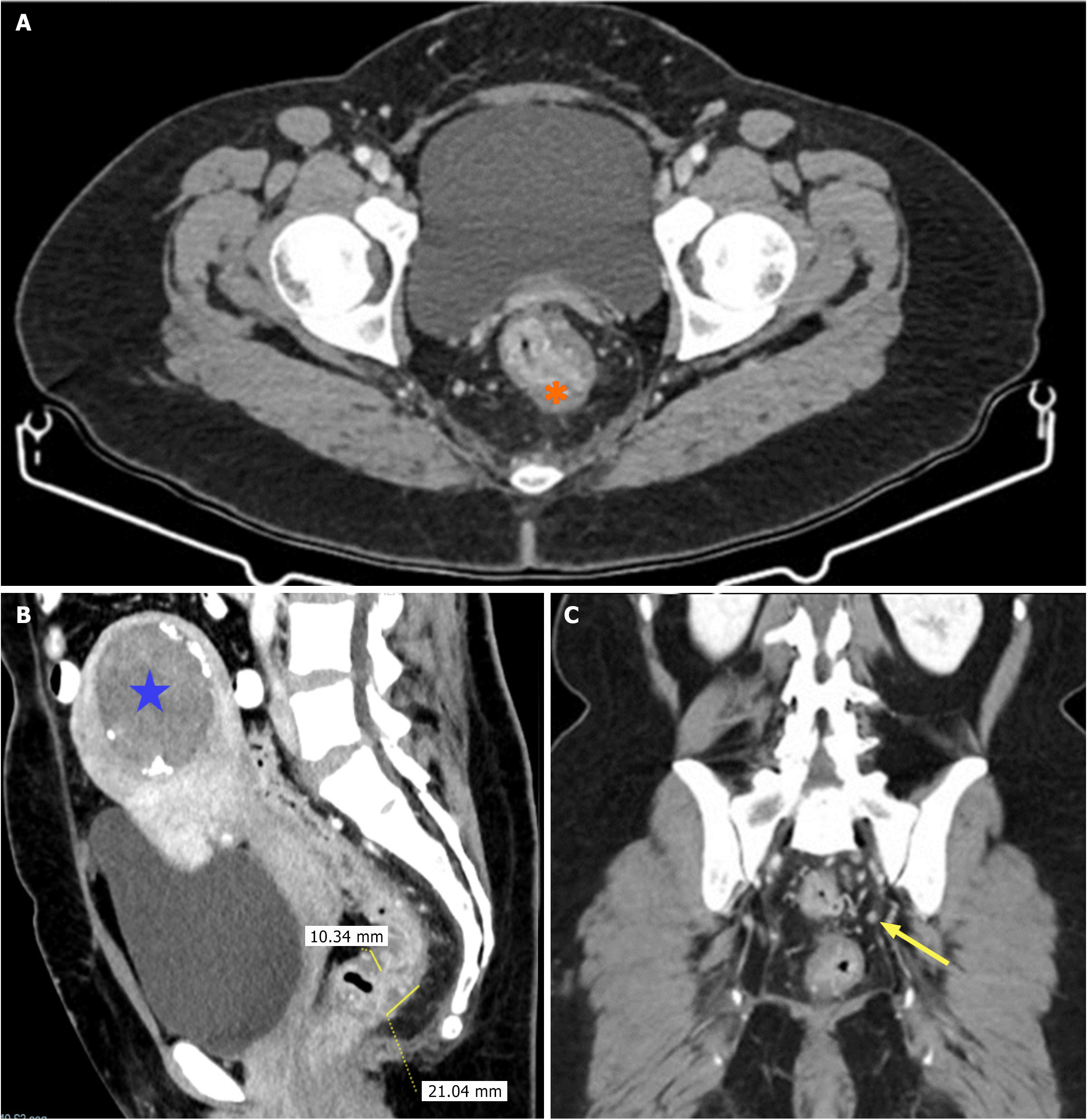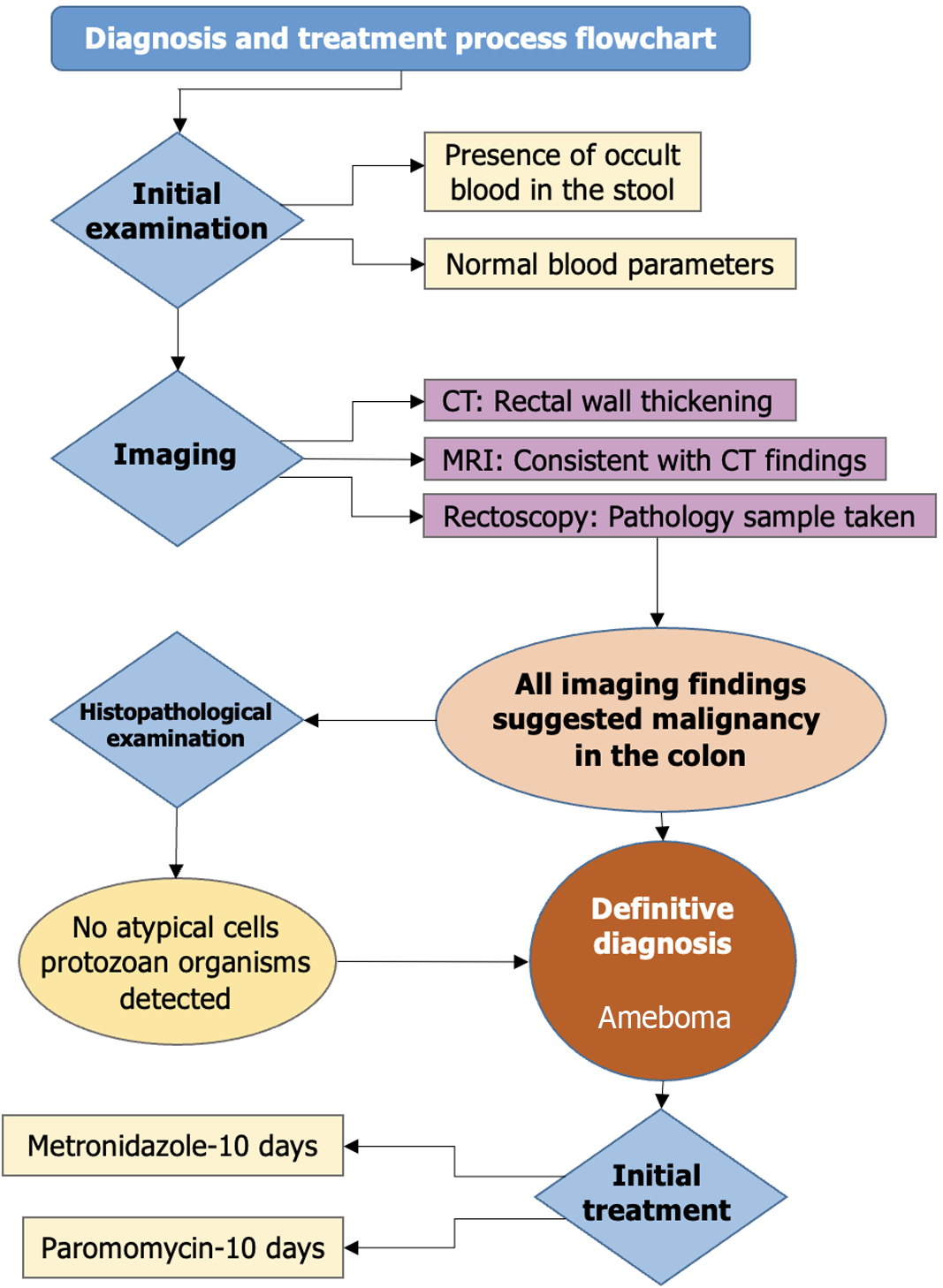Copyright
©The Author(s) 2025.
World J Gastrointest Surg. Jan 27, 2025; 17(1): 100278
Published online Jan 27, 2025. doi: 10.4240/wjgs.v17.i1.100278
Published online Jan 27, 2025. doi: 10.4240/wjgs.v17.i1.100278
Figure 1 Contrast-enhanced pelvic computed tomography images of a 46-year-old female patient.
A: Lesion suggestive of malignancy on the rectal wall, ameboma (orange asterisk), increased density in the pararectal mesenteric tissue (green arrow); B: Only one of the lymph nodes in the pararectal region increased in number (yellow arrow); C: Sagittal image shows increased thickness of the rectal wall and calcified myoma (blue star) in the uterus; D and E: It is the magnified image of coronal plane image (D). This magnified image shows increased thickness of the rectal wall (orange asterisk) and lymph nodes in the coronal section (yellow arrow).
Figure 2 Contrast-enhanced pelvic magnetic resonance images of a 46-year-old female patient.
A: Increased wall thickness in sagittal sections on T2-weighted magnetic resonance imaging, almost causing obstruction of the rectal wall (orange circle); B: Heterogeneity in mesocolic adipose tissue (white arrow) and asymmetric significant wall thickening in the rectum (orange asterisk) on T2-weighted axial magnetic resonance imaging; C: Lymph nodes in the perirectal region on diffusion weighted imaging (yellow arrow); D: T1-weighted axial post-contrast magnetic resonance images showing homogeneous contrast enhancement in the rectum with increased wall thickness (orange asterisk) and heterogeneity in mesorectal adipose tissue (white arrow).
Figure 3 Contrast-enhanced pelvic computed tomography images of a 46-year-old female patient after treatment.
A: On the axial plane image, the thickness of the rectal wall appears to regress (orange asterisk); B: In the sagittal plane image, calcified myomas in the uterus (blue star) are seen in addition to regression of rectal wall thickening; C: Shrinkage of lymph nodes after treatment (yellow arrow).
Figure 4 The flowchart summarises our diagnostic and treatment process.
CT: Computed tomography; MRI: Magnetic resonance imaging.
- Citation: Memis KB, Celik AS, Aydin S, Kantarci M. Rectal ameboma: A new entity in the differential diagnosis of rectal cancer. World J Gastrointest Surg 2025; 17(1): 100278
- URL: https://www.wjgnet.com/1948-9366/full/v17/i1/100278.htm
- DOI: https://dx.doi.org/10.4240/wjgs.v17.i1.100278












